Pop! The first champagne cork in history!
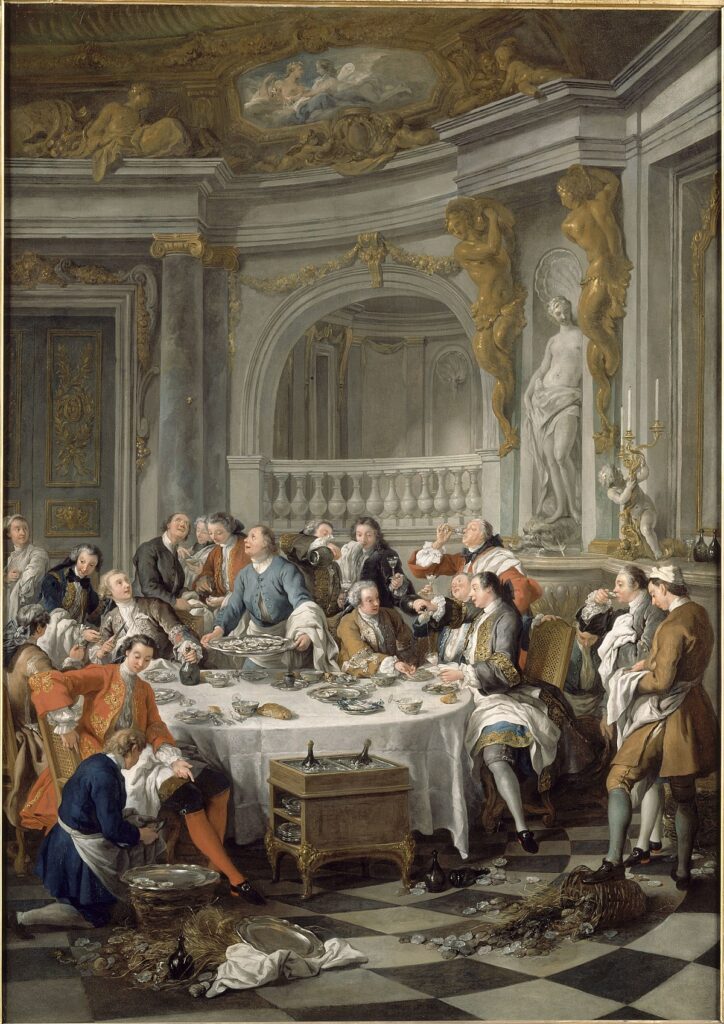
20 years after Dom Perignon’s death. Musée Condé, Château de Chantilly.
Pop! The first champagne cork in the history of painting has just popped. Look closely at “Le Déjeuner d’huîtres” preserved at the Château de Chantilly, the most famous painting from Jean-François de Troy. It is barely visible, tiny in the scene of which he secretly forms the heart.
The painter represented it while it was still in the air, in his ascending race towards a door-top representing Zephyr, personification of the West wind in Greek mythology, and Flora, goddess protector of crops and fruits.

If the sparkling wines of Champagne are now part of the French wine tradition, the surprise that catches everyone as soon as a cork jump has persisted.
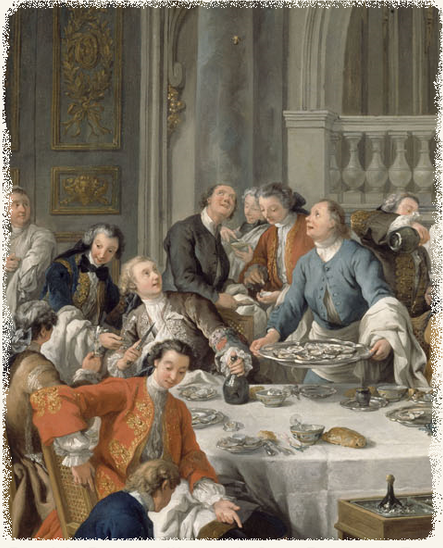
In the eyes of the gentlemen, we clearly feel the surprise. We must imagine that Champagne was still an innovative product at this time. What happiness!
Remember! At this time, the “devil’s wine” – or “saute-bouchon”, “cork-jump” – this uncontrollable beverage nicknamed so because of the bottles exploding and corks jumping under pressure, has just been domesticated by a monk whose name everyone knows: Dom Pérignon.

At the risk of disappointing you, it should however be noted that Dom Pérignon is not at the origin of the use of the second effervescent fermentation of Champagne: on the contrary, he has always sought to reduce the consequences of this defect that generates considerable losses. The process of making sparkling champagne was a collective and long-term work, where Dom Pérignon played a major role, but essentially in the development of the art of blending. An art in which he excelled.
Brother Pierre, HIS pupil and successor, wrote in his Journal: “He asked to be brought grapes from the vines that he intended to compose the first cuvée. He did not taste it until the next day on an empty stomach, after having made them spend the night in the air on his window, judging the taste according to the years.
Not only did he compose the cuvées according to this taste, but also according to the disposition, the early, late, cold, rainy years, and according to the vines well or poorly supplied with leaves. All these events served as the rules for the composition of his so distinguished cuvées.”
With Dom Pérignon, the blending of crus and grape varieties tends towards a science.
According to legend, it was in 1670, on the occasion of a pilgrimage to the Benedictine abbey of Saint-Hilaire in Languedoc, that Dom Pérignon discovered the « ancestral method » of vinification of sparkling wines of Limoux, bottling before the end of the fermentation, that has existed for over a century.
Returning to his abbey of Hautvillers, Dom Pérignon would have turned around and experienced the method on the wines of the Champagne vineyard to meet the new fashion of the Court of France of Louis XIV, the builder of the Palace of Versailles, who had fallen in love with sparkling wines.
To master this « devil’s wine », he recommends the use of a cork kept on the bottle by a hemp string impregnated with oil, which allows the wine to keep its freshness and foam.
As a generous and open man, “Dom Pé” taught his technique to another monk, the Benedictine scholar … Dom Ruinart, who came to visit him in 1669. Yes!
Ruinart, we will see in our next chapter, the first Maison de Champagne founded in 1729.

HIC JACET DOM PETRUS PERIGNON HUIUS M[O]N[ASTE]RII PER ANNOS QUADRAGINTA SEPTEM CELLERARIUS QUI RE FAMILIARI SUMMA CUM LAUDE ADMINISTRATA VIRTUTIBUS PLENUS PATERNO QUE IMPRIMIS IN PAUPERES AMORE. OBIIT AETATIS 77° ANNO 1715 REQUISCAT IN PACE AMEN”
Here rests Dom Pierre Pérignon, for 47 years cellar Master in this monastery, which, after having administered the property of our community with a care worthy of all praise, full of virtues and in the first place a paternal love for the poor, died in the 77th year of his age, in 1715. Requiescat in pace. Amen.
From now on, Champagne is promoted as a positive symbol, an emblem of small pleasures!
No more fun without him!
Back to our Oyster Lunch!
Around a messy table with a piece of furniture for ice buckets, twelve lords party, emptying their cup, sitting or standing. They are served by six servants recognizable by their costumes without embroidery. The oyster game is in full swing. Dozens of oyster shells litter the ground with the silver trays of the service. The bourriches are spilled on the tiles with their straw and their kelp. Probably the blow of a dizzy. There are no less than ten bottles in the composition, of which only two are not open.
“The Oysters lunch”, formed a diptych with another painting, “Le Déjeuner de jambon”, “The Ham Lunch”, by Nicolas Lancret, also preserved in Chantilly, which is in the same light vein, the one open with the gallant festivities of Jean-Antoine Watteau. Look again. We notice, this time, about twenty bottles, some of which are broken. Disheveled outfits and relaxed attitudes indicate a significant blood alcohol level.
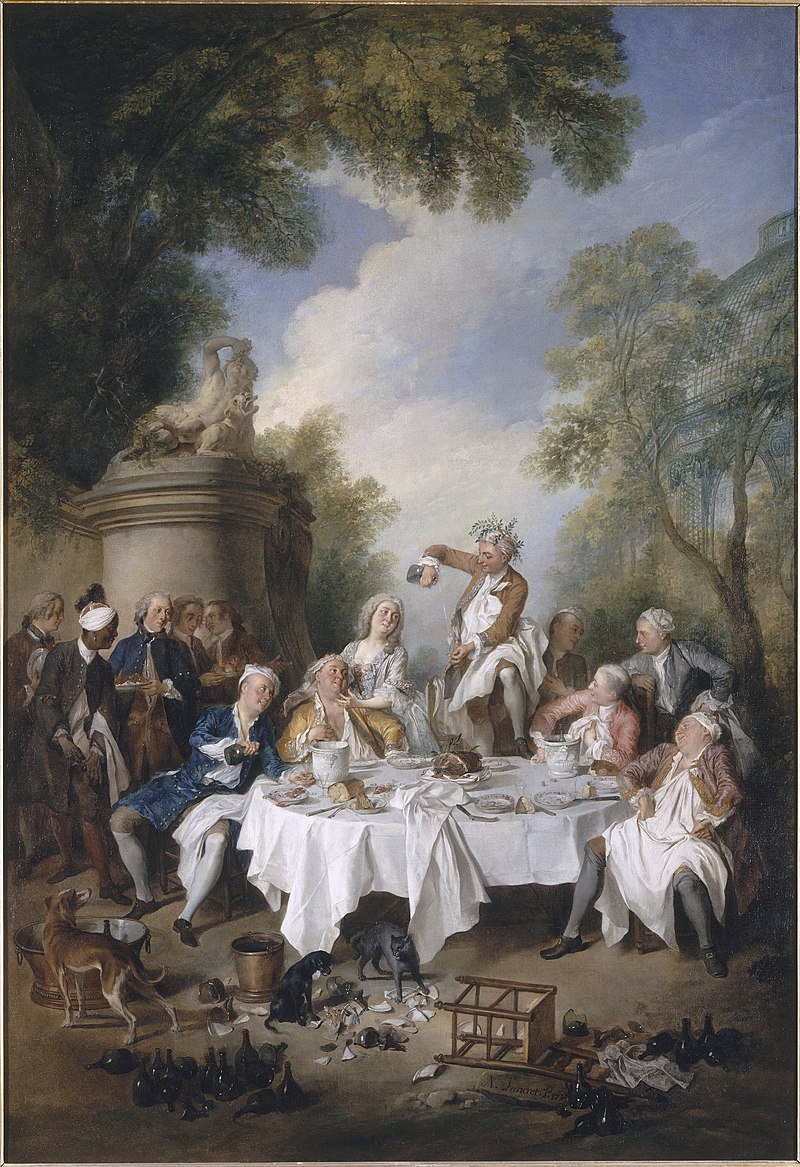
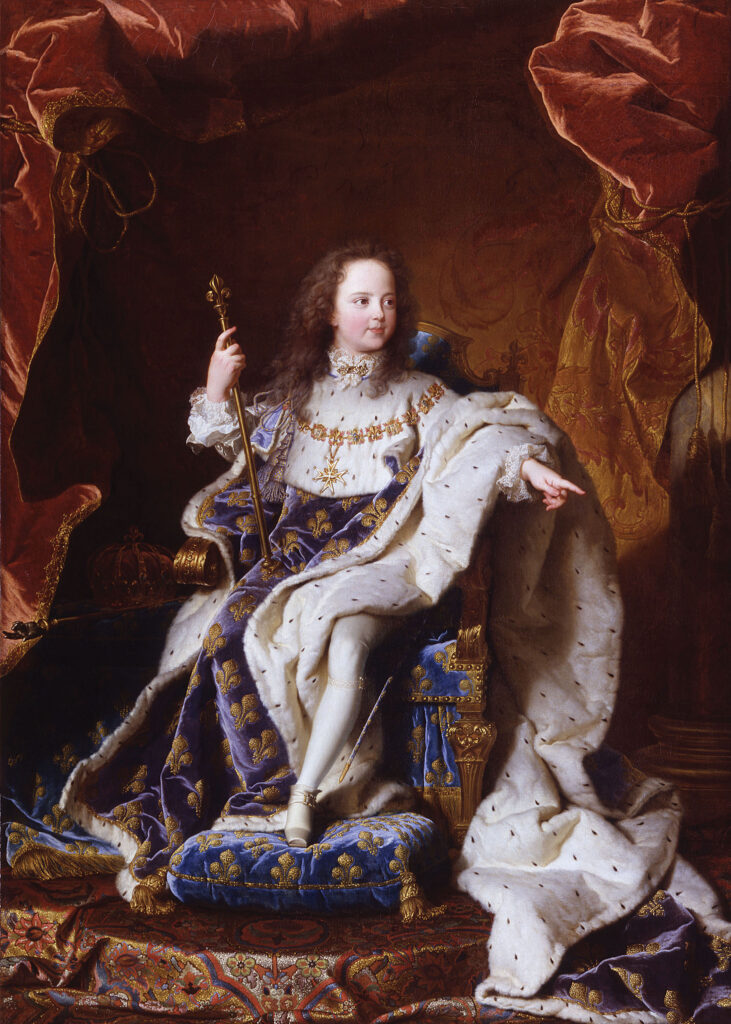
With Louis XV, the fashion of sparkling wine of Champagne within the Court of France is confirmed. The law that prohibited the bottling and transportation of wine is repealed in 1728. The glass bottle and the cork stopper, recommended by Dom Pérignon, make their appearance. The spread of Champagne becomes possible.
As with Jean-François de Troy and Nicolas Lancret, Champagne will continue to inspire 18th century French painters and to flow freely. We have a wonderful example with another painting by Jean-François de Troy, his “Déjeuner de chasse“. Commissioned by King Louis XV for the castle of Fontainebleau, its setting is more pastoral (now in Le Louvre).
This time, in this operetta farm setting, women take part in the agape. These beautiful ladies are undoubtedly libertines.

At the beginning of the reign of Louis XV, morality had returned to the freedoms that were those before the old age of King Soleil. At least in noble circles. Madame de Parabère, the Regent’s Official Mistress, Madame de Mailly, Louis XV’s first favorite, and Madame de Pompadour, were the first to promote Champagne at the Court. They persuaded their entourage that it was “the only alcohol that left you feeling beautiful after drinking”. Sarah Bernhardt, Yvette Guilbert, Marlene Dietrich and Marilyn Monroe would say the same!
And it’s Madame de Pompadour, a great lover of Champagne, who would have been at the origin of the first form of the first cup of this divine French drink, la “Flûte”.
And who became the French icon of ineffable feminine charm.
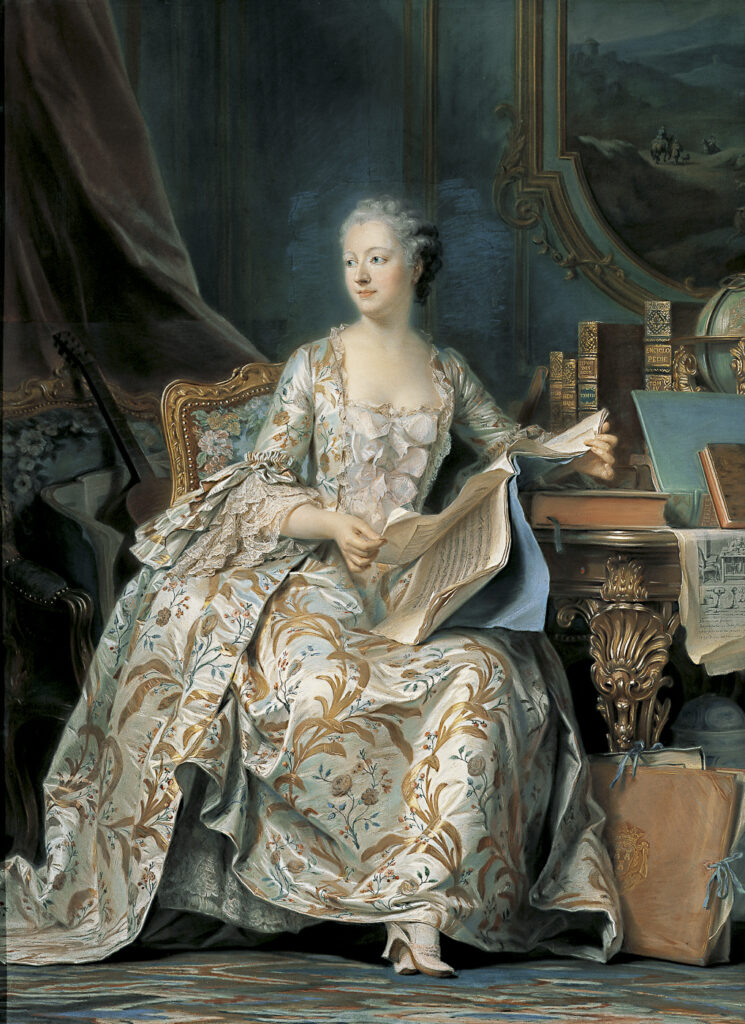

Thanks to these leading women, the unconscious association between women and Champagne has been firmly established since the mid-18th century.
Look at the way impressionist Edouard Manet chose to depict a scene of seduction in his painting “Chez le père Lathuille” (1879).
The young man’s glass undoubtedly helps him to find the necessary audacity. Although under the reproving gaze of a restaurant waiter, he has just put his free arm behind the beautiful woman’s back. Maybe soon she’ll give in to his advances. In any case, she’s eyeing the glass. After all, she could use a little disinhibitor, too…

All it would take is a snap of the fingers for the king of wines to sparkle alongside it. For it has been democratized since the Revolution. As proof, it appears among other spirits on the counter of Un bar aux Folies Bergères by the same Manet.

But beware! Such luxury is not without danger. A work by Manet’s master, Thomas Couture, bears witness to this. In ” Le Souper à la Maison d’Or “, from which Jules Défossé drew inspiration for a wallpaper presented at the 1855 Universal Exhibition, the protagonists are clearly drunk. They are sleeping off their orgy, collapsed on the floor, in one of the alcoves of the ” Maison d’Or “, the famous Parisian stop on the grand dukes’ tour.
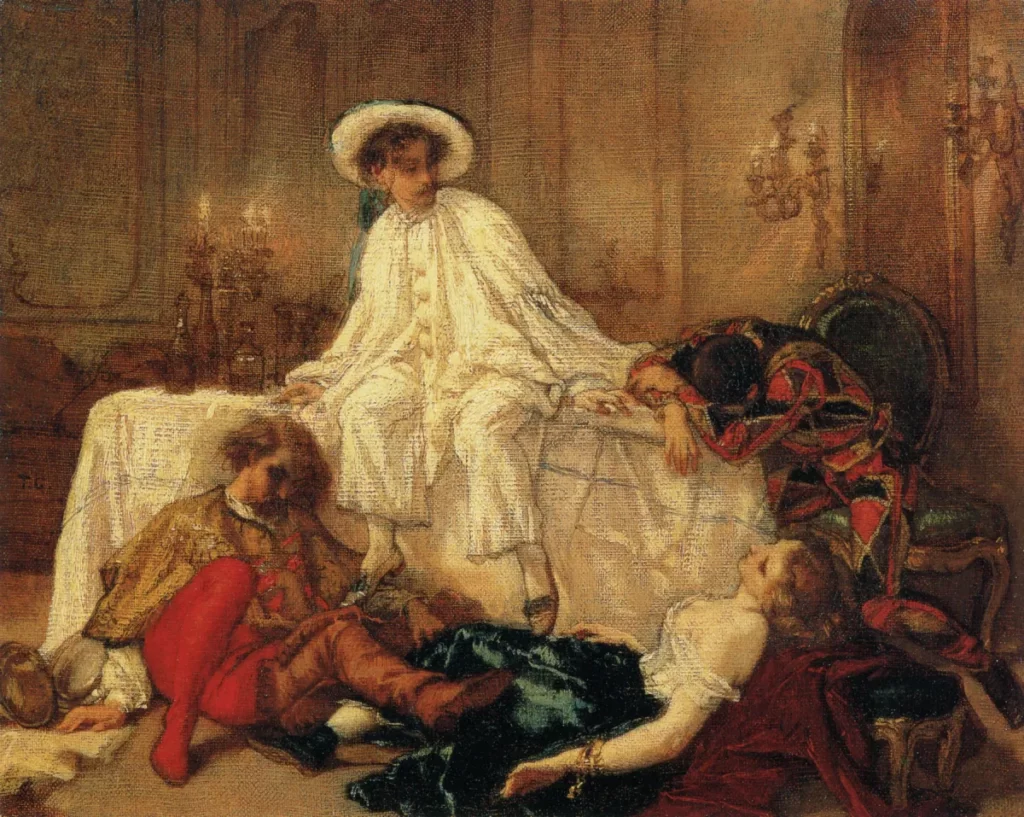
The guests of the Belle Epoque were no more restrained. In “Après le dîner” (After dinner), shown at the 1909 Paris Salon, Léon-Laurent Galand depicts a beautiful lady slumped on the lap of a tuxedo-clad man, who, with a glazed look and an eccentric laugh, dangerously brandishes his goblet over the sleeping woman. In the background of the same opulent cabinet, a second couple struggles to stand. Revelry rhymes with licentiousness.
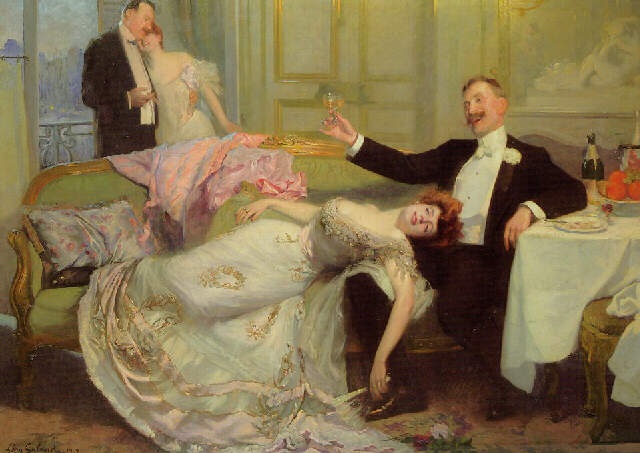
Beware of abuse! We know what it cost the heroine of Zola, Nana.
But did you know that in the 1880s, Emile Zola’s heroine gave her name to a champagne brand? The label of these bottles will even inspire Paul Cézanne for a small painting of voluntarily coarse, where the mythical casserole becomes sometimes Leda, sometimes woman in the mirror.
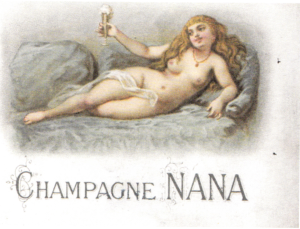
Cézanne read Nana as soon as it appeared in serial, and received the book when it was edited in January 1880. In February, he congratulates his friend for the quality of his book, and denounces “a hostile silence of the press” in front of it, which however did not prevent the popular success of Nana. It’s this painting which inspired the label of the Champagne brand, which Cézanne reinterprets in his own way, by appealing to Greek mythology.


Much more elegant is Madame Gautreau toasting, by John Singer Sargent.

A melancholic profile, the tulle of the bodice and a thin, creamy arm stretching a flute. We do not know to whom this arm is extended. But does the message of love matter more than love itself? So go the painting and the champagne: two highly flammable poems that illuminate and enhance.
This is what was the beginning of this drink which will elate the whole world.
It was during this splendid century, a century of fragile balance too – that of the birth of Hayden (1732), Mozart (1756), Beethoven (1770), the maturity of Johann Sebastian Bach, who died in 1750, and Vivaldi, who died in 1741 – that the first Champagne Houses were born. Ruinart to start. Then Moët. Then Clicquot. Then…
An incredible adventure that we tell you in a next newsletter.
Written by Dr. FX

